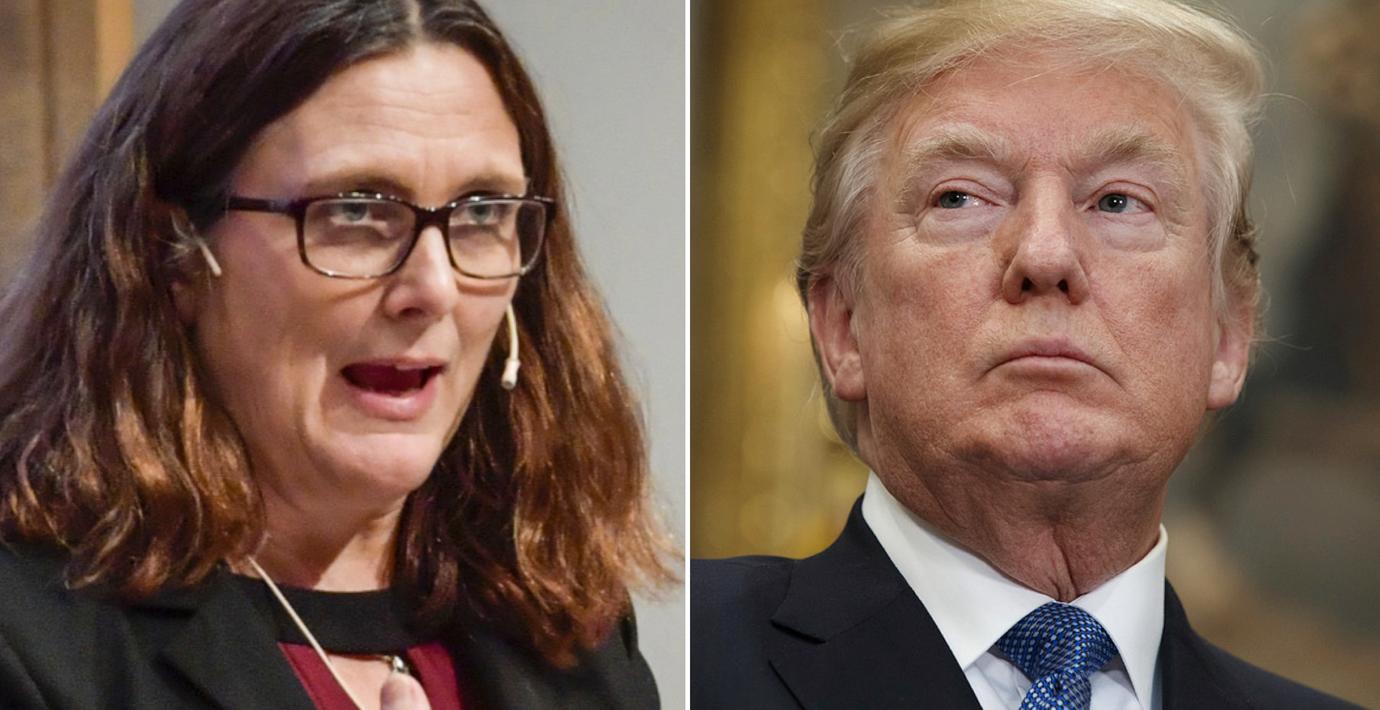
Sverige stämmer in i EU:s kritik mot skattereformen
EU-kommissionen instämmer i kritiken mot USA:s skattereform från fem stora EU-länder, skriver Nyhetsbyrån Direkt. Även Sverige har framfört invändningar vid diskussioner inom EU mot den amerikanska importskatten.
Den föreslagna skatten på 20 procent på varor som importeras till USA inom en företagskoncern ser ut att strida mot WTO-reglerna, sa kommissionens vice ordförande för investeringar Jyrki Katainen, vid en presskonferens i Bryssel.
Han underströk att USA givetvis har rätt att reformera sitt skattesystem.
– Men reformen får inte införa orättvisa skattemetoder och dubbelbeskattning, sa han enligt Direkt.
Läs också
bakgrund
Tax Cuts and Jobs Act of 2017
Wikipedia (en)
The Tax Cuts and Jobs Act is a United States Congressional bill to amend the Internal Revenue Code of 1986, effectively altering the rate of taxation for individuals and businesses. The bill also calls for the elimination for several tax deductions. It is the major tax reform advocated by congressional Republicans and the Trump administration.
Under the version passed by the U.S. House of Representatives, businesses (C-corporations and pass-through entities like partnerships and S-corporations) would experience $1.1 trillion in net tax reductions and individuals would experience $200 billion in net tax reductions over a decade. In addition, the very wealthiest taxpayers would have estate taxes eliminated over time, a $150 billion tax reduction. The individual tax cuts fade over time so the Senate can attempt to pass the bill with only 51 votes under the budget reconciliation process. The non-partisan Joint Committee on Taxation estimated that GDP would be 0.8% percent higher, employment would be 0.6% higher, and personal consumption would be 0.6% higher during the 2018–2027 period due to the Act. Implementing the Act would add an estimated $1.4 trillion to the national debt over 10 years, or $1.0 trillion after macroeconomic feedback effects, in addition to the $10 trillion increase forecast under the current policy baseline.
Under the version of the bill passed by the U.S. Senate and assuming the tax cuts are deficit financed without offsetting spending cuts, 7% of taxpayers would pay more than under current law in 2019, 10% in 2025, and 48% in 2027; the income groups with net increases in taxes or reduced benefits (mainly lower healthcare subsidies) earn under $54,700. The top 1% of taxpayers would experience approximately 15% of the reductions in 2019, 22% in 2025, and 62% in 2027. The bottom 80% of taxpayers would experience 38% of the reductions in 2019, 35% in 2025, and 9% in 2027. Taxpayers with incomes between $49,600 and $87,400 (the 40th to 60th percentile) would receive a tax cut averaging $840 in 2019, $930 in 2025, and $40 in 2027. Taxpayers in the top 1% (income over $750,000) would receive a tax cut of $28,430 in 2019, $47,890 in 2025, and $26,880 in 2027. These effects assume the tax cuts are deficit-financed; if they are paid for (financed) by spending cuts borne evenly by all taxpayers, the Tax Policy Center estimates 72% of taxpayers would be adversely impacted in 2019, as most spending cuts would impact lower- to middle-income taxpayers.
The Senate version also impacts healthcare, with up to 13 million fewer covered with health insurance and Medicare cuts of up to $25 billion annually. The Congressional Budget Office reported that the deficit increase of $1.4 trillion in the Senate bill could trigger automatic spending reductions in specified categories of up to $150 billion per year over the next 10 years, including $25 billion in Medicare. This is due to the 2010 Statutory Pay-as-You-Go Act or PAYGO. The Senate requires 60 votes to waive PAYGO requirements, which would mean Republicans and Democrats would have to agree to waive the rule. If the PAYGO rule is not waived, these spending cuts would be automatically implemented.
The bill was introduced in the United States House of Representatives on November 2, 2017 by Congressman Kevin Brady, Republican representative from Texas. On November 9, 2017, the House Ways and Means Committee passed the bill on a party-line vote, advancing the bill to the House floor. The House passed the bill on November 16, 2017, on a mostly-party line vote of 227–205. No Democrat voted for the bill, while 13 Republicans voted against it. Companion legislation was passed by the Senate Finance Committee and Senate Budget Committee, both times on a straight party-line vote. In the early morning hours of December 2, 2017, the Senate passed their version of the bill by a 51–49 vote. Bob Corker (R–TN) was the only Republican senator to vote against the measure. Differences between the House and Senate bills must be reconciled in a conference committee, prior to providing a final bill to the President for signature.
Although the bill began as a tax bill, provisions were added in Congress with wider reach. The House bill contains several provisions that appeal to the Christian right, including the repeal of a 1954 ban on political activism by tax-exempt religious organizations and the creation of a new legal right for fetuses. Both the House and the Senate bills would open the Arctic National Wildlife Refuge (ANWR) to oil and gas drilling.
Omni är politiskt obundna och oberoende. Vi strävar efter att ge fler perspektiv på nyheterna. Har du frågor eller synpunkter kring vår rapportering? Kontakta redaktionen